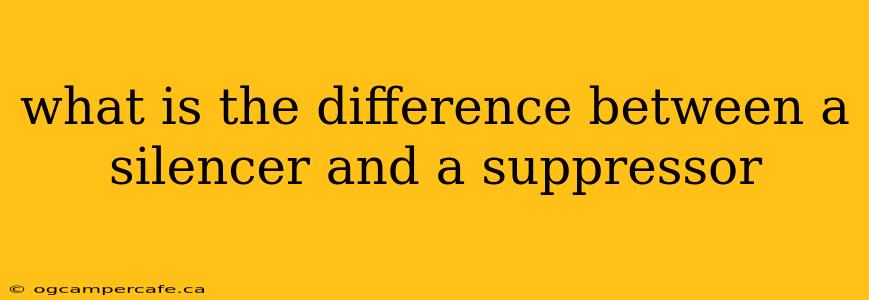The terms "silencer" and "suppressor" are often used interchangeably, leading to confusion. While they both refer to firearm attachments designed to reduce the sound of a gunshot, there's a crucial distinction: the reality of their noise reduction capabilities. This article will clarify the difference, explore their mechanisms, and discuss the legal implications surrounding their use.
The Semantics of Silence: Silencer vs. Suppressor
The key difference lies in the implied effect. A silencer suggests complete or near-complete elimination of sound, a notion perpetuated by Hollywood. In reality, no device can truly silence a gunshot. The term is misleading and inaccurate.
A suppressor, on the other hand, accurately reflects the device's function: to suppress or significantly reduce the sound of a gunshot. This more realistic terminology highlights the device's limitations and avoids the false promise of absolute silence. Hence, the term "suppressor" is preferred by firearms experts and legal professionals.
How Suppressors Work: The Science of Sound Reduction
Suppressors work by diverting and slowing down the expanding gases produced when a firearm is discharged. This is achieved through a series of internal baffles and chambers. These baffles create a series of expansions and contractions, reducing the velocity and pressure of the escaping gases. This, in turn, significantly reduces the loudness of the gunshot.
Key Components and Mechanisms:
- Baffles: These are strategically placed internal components that redirect and slow the propellant gases. The design and arrangement of baffles significantly impact the suppressor's effectiveness.
- Chambers: The spaces between baffles create chambers where the expanding gases are slowed and cooled. This process helps to further reduce the noise and recoil.
- Mounting System: The suppressor is typically attached to the muzzle (end) of the firearm using a mounting system that ensures a secure and airtight seal.
The Reality of Noise Reduction: dB Levels and Expectations
While suppressors drastically reduce the sound of a gunshot, they don't eliminate it entirely. The level of noise reduction depends on several factors, including:
- Caliber of the firearm: Larger calibers generally produce louder sounds, making suppression more challenging.
- Suppressor design and quality: High-quality suppressors with optimized baffle designs offer better noise reduction.
- Ammunition type: The type of ammunition used can also affect the loudness of the gunshot.
Even with a suppressor, a gunshot will still be loud enough to cause hearing damage if you are not wearing appropriate hearing protection. Expect a reduction of sound from a significantly loud bang to a more manageable, yet still considerable, noise.
Legal Considerations: Ownership and Use Restrictions
The legal status of suppressors varies significantly across different jurisdictions. In some areas, they are readily available with proper licensing, while in others, they are heavily regulated or even prohibited. It is crucial to understand and comply with all applicable federal, state, and local laws and regulations regarding the ownership, possession, and use of suppressors before purchasing or using one. Failure to do so can result in severe legal penalties.
Conclusion: Informed Terminology and Responsible Use
Using the term "suppressor" instead of "silencer" promotes a more accurate understanding of the device's function and limitations. While suppressors effectively reduce gunshot noise, they do not eliminate it completely. Responsible use always includes hearing protection. Remember to always check and abide by your local laws and regulations regarding the use and ownership of suppressors.
